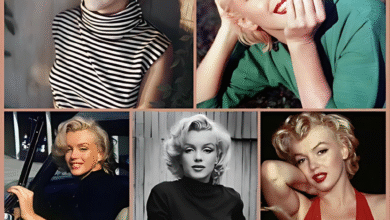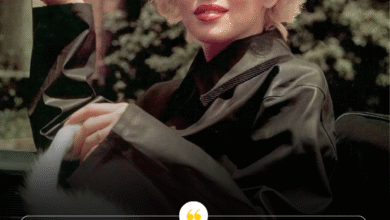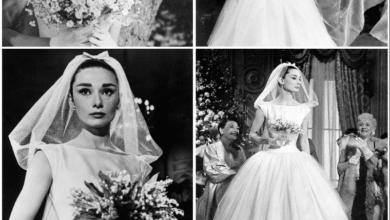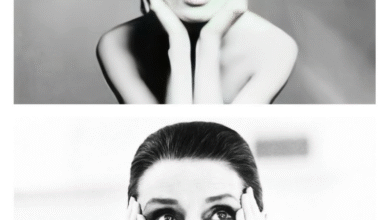The Legendary Actors Marilyn Monroe Worked With—But Never Publicly Praised!
OPINION: This article may contain commentary which reflects the author's opinion.
Marilyn Monroe, an iconic figure in Hollywood history, captivated audiences with her charm, beauty, and unmistakable presence. Throughout her illustrious career, she starred alongside some of the most talented and legendary actors of her time. Though Monroe’s professional relationships with these stars have been documented, there is no widely recognized interview or quote where she explicitly names her “best” co-stars. However, by examining her work with some of Hollywood’s most respected actors, we can gain insight into which collaborations likely left a lasting impression on her, based on the context and significance of their roles.
A Career That Shaped the Hollywood Landscape
Monroe’s rise to fame began in the late 1940s, transitioning from bit parts to starring roles that would define her legacy. From her early work in All About Eve (1950), where she shared the screen with Bette Davis, to her major successes in films like Gentlemen Prefer Blondes (1953) and Some Like It Hot (1959), Monroe’s ability to shine in both comedies and dramas proved her versatility as an actress. Throughout these films, she had the opportunity to work alongside some of the most distinguished actors in Hollywood.
Notable Collaborations with Hollywood Legends
Monroe’s career included numerous collaborations with actors who were already well-established legends by the time they shared the screen. Here are some of the most notable:
Laurence Olivier – The Prince and the Showgirl (1957)
In The Prince and the Showgirl, Monroe starred alongside the esteemed British actor Laurence Olivier. While the collaboration was marked by behind-the-scenes conflicts—particularly with Olivier’s strict directorial approach—it remains one of Monroe’s most significant professional experiences. Despite the tensions, working with a Shakespearean actor like Olivier would have likely commanded a level of professional respect. The clash between Monroe’s more naturalistic style and Olivier’s classical training undoubtedly contributed to their friction, but it also created a memorable on-screen pairing.
Clark Gable – The Misfits (1961)
Monroe’s final completed film, The Misfits, paired her with the legendary Clark Gable. This film marked a poignant moment in both actors’ careers, with Gable nearing the end of his life and Monroe grappling with personal struggles. The film’s production was notably difficult, with both actors enduring physical and emotional challenges. Monroe’s admiration for Gable, however, is suggested by her willingness to push through the difficulties of filming. Their collaboration in The Misfits remains one of the most significant in Monroe’s career, symbolizing her resilience and respect for Gable’s immense talent.
Tony Curtis and Jack Lemmon – Some Like It Hot (1959)
Monroe’s work with Tony Curtis and Jack Lemmon in the classic comedy Some Like It Hot is one of her most iconic on-screen partnerships. Though there were challenges on set, including numerous retakes of a famous kiss scene, Curtis later commented on the difficulty of performing such scenes due to Monroe’s perfectionist approach to her craft. Despite the challenges, Some Like It Hot became one of the most beloved comedies of all time, and Monroe’s chemistry with Curtis and Lemmon remains a highlight of her filmography. Her work in this film was recognized with a Golden Globe, cementing her status as one of Hollywood’s top comedic talents.
Cary Grant – Monkey Business (1952) and Notorious (1946)
Monroe had the opportunity to work with Cary Grant in the screwball comedy Monkey Business (1952). Their pairing was dynamic, with Grant’s sophistication contrasting against Monroe’s more playful, bubbly persona. The chemistry between the two, even in their lighter moments, demonstrated Monroe’s ability to shine alongside established stars. Grant, a Hollywood legend in his own right, was known for his wit and charm, making him a fitting partner for Monroe, whose comedic timing and physicality complemented his own.
Monroe’s Own Reflections: No Explicit “Best Co-Star”
Despite her many significant collaborations, Monroe did not frequently name her “best” co-stars publicly. As is often the case with public figures, her interviews focused more on discussing her roles and challenges, rather than singling out individuals she admired. For instance, her 1962 interview with Life magazine, conducted by Richard Meryman, delved into her personal struggles and career reflections but didn’t specifically mention any particular actor as her favorite.
That said, in examining her professional relationships, it’s clear that Monroe worked with some of Hollywood’s finest. She may not have explicitly declared a favorite, but her career was undoubtedly shaped by the influence of co-stars such as Gable, Olivier, and Curtis, whose talent and stature in the industry likely earned her admiration.
Inferences from Her Collaborations
While no direct statements about Monroe’s “best” co-stars are available, the actors she worked with often shared their respect and admiration for her as a colleague. Both Gable and Olivier, for instance, were known for their high standards of professionalism, and their willingness to work with Monroe speaks to the respect they had for her abilities as an actress. Monroe’s own comments about her experiences, whether challenging or rewarding, suggest that she valued working with established legends, but also found great joy in collaborating with her peers, such as Curtis and Lemmon, in lighter, more comedic films.
Conclusion: Monroe’s Legacy of Legendary Collaborations
While Marilyn Monroe never explicitly named her “best” co-stars, her extensive work with some of Hollywood’s greatest talents tells its own story. From the artistic tensions with Laurence Olivier to the iconic on-screen partnerships with Tony Curtis and Jack Lemmon, Monroe’s career was marked by collaboration with industry giants who likely left a lasting impression on her. These roles were not just career-defining for Monroe, but they also served as milestones in the careers of those she worked alongside, cementing her legacy as one of cinema’s most enduring icons.
Ultimately, Monroe’s filmography reveals a talented actress who worked alongside and learned from the best in the business—an honor she likely appreciated, even if she didn’t always express it publicly.



